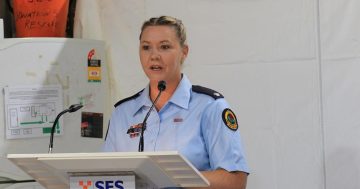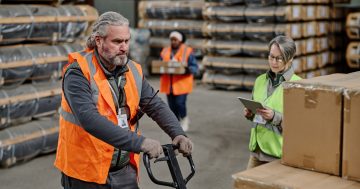 1. This week 10 years ago, Disability Discrimination Commissioner, Graeme Innes called on the Australian Public Service to introduce quotas for the employment of people with a disability.
1. This week 10 years ago, Disability Discrimination Commissioner, Graeme Innes called on the Australian Public Service to introduce quotas for the employment of people with a disability.
Mr Innes told a Senate Estimates Committee the efforts of the Public Service in this area were “shameful” and it and the Government could not “try to sell employment of people with disability to the private sector if they are not performing in that area themselves”.
Mr Innes said that while efforts were being made by the Public Service Commissioner to improve employment opportunities for disabled people, the current employment rates were very poor. “I do think ‘massive fail’ is the absolutely correct expression,” Mr Innes said. He said while he had always been opposed to quotas or targets for disabled workers, they were now necessary.
2. Meanwhile in Tasmania, new laws were introduced to allow the State Government sack underperforming Public Servants.
Premier, Lara Giddings said the new powers were necessary because the Tasmanian PS was “too big” and “changes were needed” to improve its efficiency.
Ms Giddings said mass redundancies would not be offered but employees in programs identified by Departmental heads as no longer required would be laid off.
Workers deemed “surplus to requirement” would be given six months and help to find a new job before they were made redundant. The plan was to cut the equivalent of more than 2,000 public sector jobs over three years.
3. This week 10 years ago, NSW Maritime received international recognition for its efforts in encouraging safety in the commercial shipping industry.
The International Institute of Marine Surveying gave the NSW Agency its highest honour, the Crystal Award.
“So far this year, NSW has registered a record low in vessel incidents and fatalities, and that is across both the recreational and commercial sectors,” Chief Executive of NSW Maritime, Steve Dunn said.
“This is recognition of the high standards of safety being set in NSW.”
4. Also doing well internationally this week back then was the Royal Botanic Gardens Melbourne, which won a gold medal at London’s Chelsea Flower Show for its “Australian Garden”. Director and Chief Executive of the Gardens, Dr Philip Moors said the win was “a tremendous accolade for Australian horticulture and design”.
The winning garden depicted an imaginary journey from the arid outback of Australia, characterised by the absence of water, to the wetter, urban east coast and the gradually increasing presence of water in the landscape.
Minister for Environment and Climate Change, Ryan Smith said the win was an outstanding acknowledgement to the team at the Gardens, including designer Jim Fogarty.
5. In Queensland, a report by the Australian Building Codes Board found the State’s current building standards for structures in cyclone zones were up to scratch and working well.
Minister for Local Government, Paul Lucas said the report based its findings on the damage to homes and buildings in the wake of Tropical Cyclone Yasi. During Yasi, wind gusts were estimated to range from 133 to 245 kilometres per hour.
“[The] report shows that less than 3 per cent of all post-1980s houses in the worst-affected areas experienced significant roof damage, although more than 12 per cent of the pre-1980s housing inspected had,” Mr Lucas said.
He said the report found that education and continuing maintenance of homes would help build the resilience of communities.
6. Also this week 10 years ago, Queensland became the first Australian State to pass the Work Health and Safety Bill, to provide strong workplace safety protections while reducing red tape for business.
Minister for Industrial Relations, Cameron Dick said the new laws would remove the confusion and complexity caused by Australia’s multiple workplace legislation and form part of the national reforms to harmonise workplace laws across the nation.
“The laws broaden the definition of ‘worker’ to include labour hire, contractors and subcontractors, and impose the onus of proof on the regulator to prove an offence,” Mr Dick said. “Ultimately, this is about making it simpler for employers to keep their workplaces safe while continuing to provide protection for workers.”











